
Louis XIV, also known as Louis the Great or the Sun King, was King of France from 1643 until his death in 1715. His verified reign of 72 years and 110 days is the longest of any sovereign. Although Louis XIV's France was emblematic of the Age of Absolutism in Europe, the King surrounded himself with a variety of significant political, military, and cultural figures, such as Bossuet, Colbert, Louvois, Le Brun, Le Nôtre, Lully, Mazarin, Molière, Racine, Turenne, Condé, and Vauban.
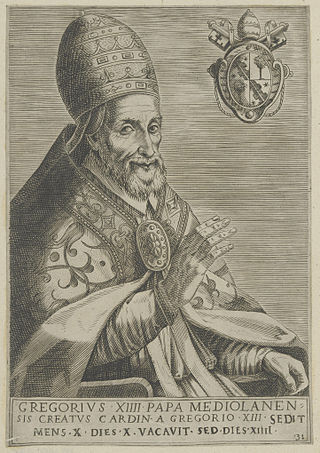
Pope Gregory XIV, born Niccolò Sfondrato or Sfondrati, was head of the Catholic Church and ruler of the Papal States from 5 December 1590 to his death, in October 1591.

The Palace of Versailles is a former royal residence commissioned by King Louis XIV located in Versailles, about 19 kilometers (12 mi) west of Paris, France.
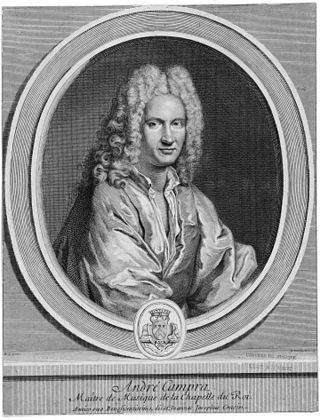
André Campra was a French composer and conductor of the Baroque era. The leading French opera composer in the period between Jean-Baptiste Lully and Jean-Philippe Rameau, Campra wrote several tragédies en musique and opéra-ballets that were extremely well received. He also wrote three books of cantatas as well as religious music, including a requiem.
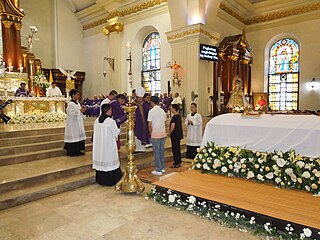
A Requiem or Requiem Mass, also known as Mass for the dead or Mass of the dead, is a Mass of the Catholic Church offered for the repose of the soul or souls of one or more deceased persons, using a particular form of the Roman Missal. It is usually celebrated in the context of a funeral.
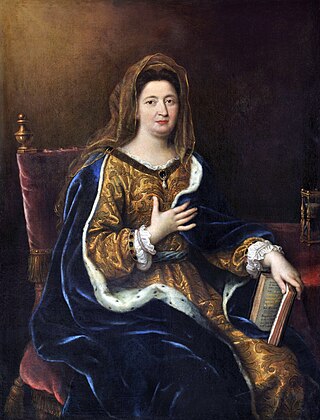
Françoise d'Aubigné, known first as Madame Scarron and subsequently as Madame de Maintenon, was a French noblewoman and the second wife of Louis XIV of France from 1683 until his death in 1715. Although she was never considered queen of France, as the marriage was carried out in secret, Madame de Maintenon had considerable political influence as one of the King's closest advisers and the governess of the royal children.

Maria Luigi Carlo Zenobio Salvatore Cherubini was an Italian Classical and Romantic composer. His most significant compositions are operas and sacred music. Beethoven regarded Cherubini as the greatest living composer of his era. Cherubini's operas were heavily praised and interpreted by Rossini.

Events from the year 1704 in Canada.

Michel Richard Delalande [de Lalande] was a French Baroque composer and organist who was in the service of King Louis XIV. He was one of the most important composers of grands motets. He also wrote orchestral suites known as Simphonies pour les Soupers du Roy and ballets.
Jean Richafort was a Netherlandish composer of the Renaissance, a member of the third generation of the Franco-Flemish School.
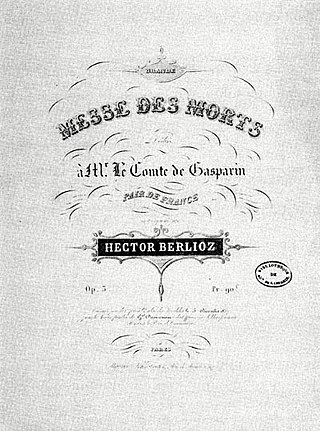
The Grande Messe des morts, Op. 5, by Hector Berlioz was composed in 1837. The Grande Messe des Morts is one of Berlioz's best-known works, with a tremendous orchestration of woodwind and brass instruments, including four antiphonal offstage brass ensembles. The work derives its text from the traditional Latin Requiem Mass. It has a duration of approximately ninety minutes, although there are faster recordings of under seventy-five minutes.
Jean Gilles was a French composer, born at Tarascon.
Balaguères is a commune in the Ariège department in the Occitanie region of south-western France.

Chein-Dessus is a commune in the Haute-Garonne department in southwestern France.
The Requiem in C minor for mixed chorus was written by Luigi Cherubini in 1816 and premiered 21 January 1817 at a commemoration service for Louis XVI of France on the twenty-fourth anniversary of his beheading during the French Revolution.
Louis Henri de Pardaillan de Gondrin, marquis de Montespan was a French nobleman, most notable as the husband of Louis XIV's mistress Madame de Montespan.
Marie Christine de Pardaillan de Gondrin was the eldest legitimate child of Françoise de Rochechouart de Mortemart and her husband, the Marquis of Montespan. She died in her teens and never married.

Charles d'Helfer (1598–1661) was a French baroque composer and maître de musique at Soissons Cathedral. His masses follow a strict one syllable per note style.
The Music for the Requiem Mass is any music that accompanies the Requiem, a Mass in the Catholic Church for the deceased. It has inspired a large number of compositions, including settings by Mozart, Berlioz, Donizetti, Verdi, Bruckner, Saint-Saëns, Dvořák, Fauré and Duruflé. Originally, such compositions were meant to be performed in liturgical service, with monophonic chant. Eventually the dramatic character of the text began to appeal to composers to an extent that they made the requiem a genre of its own, and the compositions of composers such as Verdi are essentially concert pieces rather than liturgical works.












